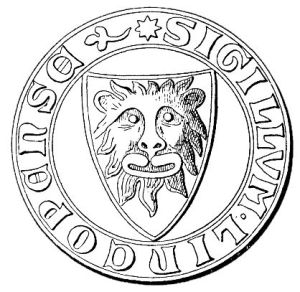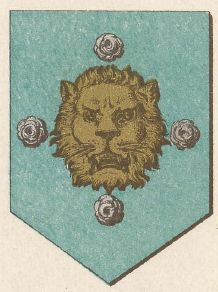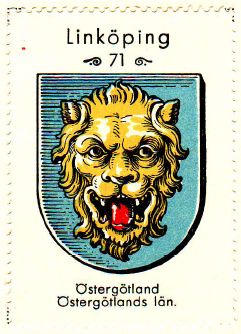Linköping
Template:Sweden LINKÖPING
Province (Landskap): Östergötland
County (Län): Östergötlands län
Additions : 1911 Sankt Lars; 1963 Landeryd; 1967 Kärna (1952 Kaga, Ledberg, Slaka); 1971 Norra Valkebo (1952 Björkeberg, Rappestad, Sjögestad, Vikingstad, Västerlösa), Södra Valkebo (1952 Gammalkil, Nykil, Ulrika), Vreta kloster (1952 Flistad, Ljung, Stjärnorp), Vårdnäs (1952 Skeda, Vist), Åkerbo (1952 Gistad, Lillkyrka, Rystad, Törnevalla, Östra Harg, Östra Skrukeby; 1961 Askeby (1952 Bankekind, Vårdsberg, Örtomta))
Official blason
I blått fält ett lejonansikte av guld med röd beväring.
Origin/meaning
The arms were granted on March 1, 1946.
Linköping is a city since the 12th century and has one of Sweden's oldest arms. The lion first appears on the first known seal, dating from the late 13th century.
| The 13th century seal |
The origin of the lion's head is not known. It is assumed that the head may be derived from the arms of the oldest Swedish royal family, the Folkungar. Bengt Birgersson, brother of the Kings Valdemar and Magnus, who died in 1291 was bishop of Linköping and he started to develop the town into a real city. Another explanation is that the arms may be canting; from Leonköping, or lion's city.
| The arms as shown by Liljeblad, 1878 |
The arms in the Kaffe Hag album +/- 1935 |
Contact and Support
Partners:
Your logo here ?
Contact us
© since 1995, Heraldry of the World, Ralf Hartemink 
Index of the site
Literature : Nevéus and de Waern, 1992













